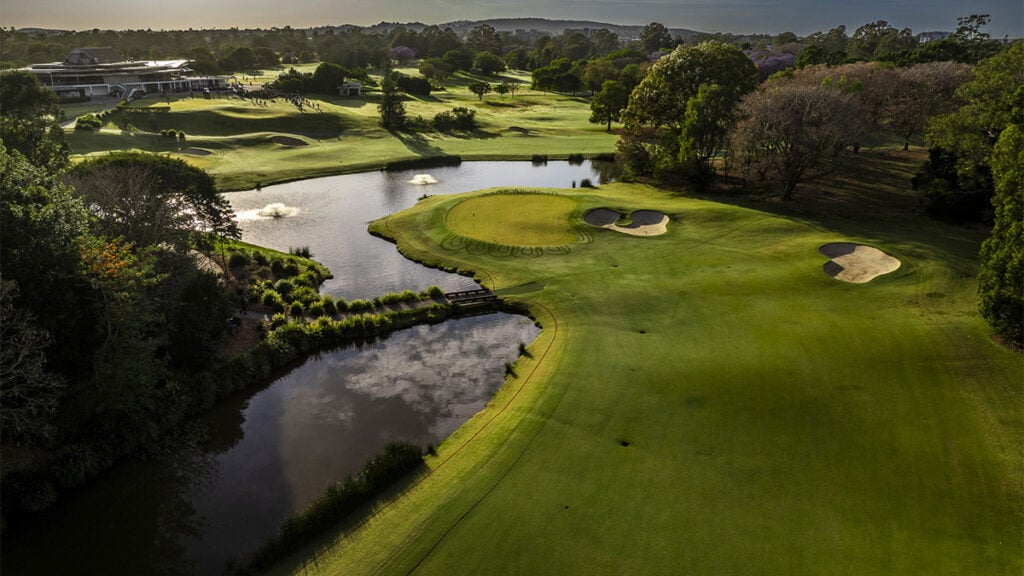…and not a place to drop. Here’s what to do when you encounter temporary water
With Sam Burns being denied relief from temporary water (twice) at this year’s US Open and many golfers in Australia anticipating another potentially wet spring and summer, it is as good a time as any to address temporary water.
Temporary water is any temporary accumulation of water on the surface of the ground that can be seen before or after the player takes their stance for the next stroke. Temporary water is one of the abnormal course conditions, which means the ruling bodies don’t believe it is part of the challenge of playing golf and the course, and free relief is generally allowed except in a penalty area.
For those in colder climates, early-morning dew and frost on the ground are not classed as temporary water, so there is no free relief from those conditions.
When you are assessing whether you have interference from temporary water, just hearing or feeling water is not sufficient, nor is standing on mushy, soft ground, as you must see water. There is no requirement for a set amount of water – one drop is enough. Importantly, the water must be seen when you take your normal stance. This means, you are not allowed to press down excessively with your feet. As we say, you get free relief for stance, not the dance.
Unless your ball is in a penalty area, you can get free relief from temporary water anywhere on the course for three things – if you have interference to the lie of the ball, your area of intended swing and your area of intended stance.
If your ball is on the putting green, you may also be entitled to free relief if you have temporary water on your line of play. This is not available when your ball is elsewhere on the course.
The first item is the lie of the ball. So if your ball is sitting in water that can be seen sitting on top of the ground, then you are entitled to free relief straight away. Your area of intended stance is the position of your feet and body in preparing for and making your stroke. Therefore, you cannot stand next to your ball to bring up water in order to get relief, as that is not your stance to hit the ball. You must take your normal stance and then determine whether you have interference from temporary water.
The most important part (and why Burns was correctly denied relief), is that the water must remain present either before or after the stance is taken. So seeing water for a second and then it disappearing is not grounds for free relief.
To take relief (except on the putting green), find the nearest point of complete relief (where you no longer have interference from the water) and then drop within one club-length of that spot, no nearer the hole. On the putting green, find the nearest point of complete relief (which may be off the putting green) and just place your ball there.
If your ball is in a bunker and there is interference from temporary water – for example, the ball is in the water or the water interferes with your stance or intended swing – you have two options. You may take free relief, but the ball must be dropped in the bunker. Or you may take back-on-the-line relief and drop the ball outside the bunker for one penalty stroke.
Temporary water is not a judgement call or opinion, it is a fact that you must be able to see.
Stuart McPhee is a referee for the PGA Tour of Australasia and conducts entertaining and empowering rules sessions at golf clubs.
Main photo by: andy lyons/getty images




